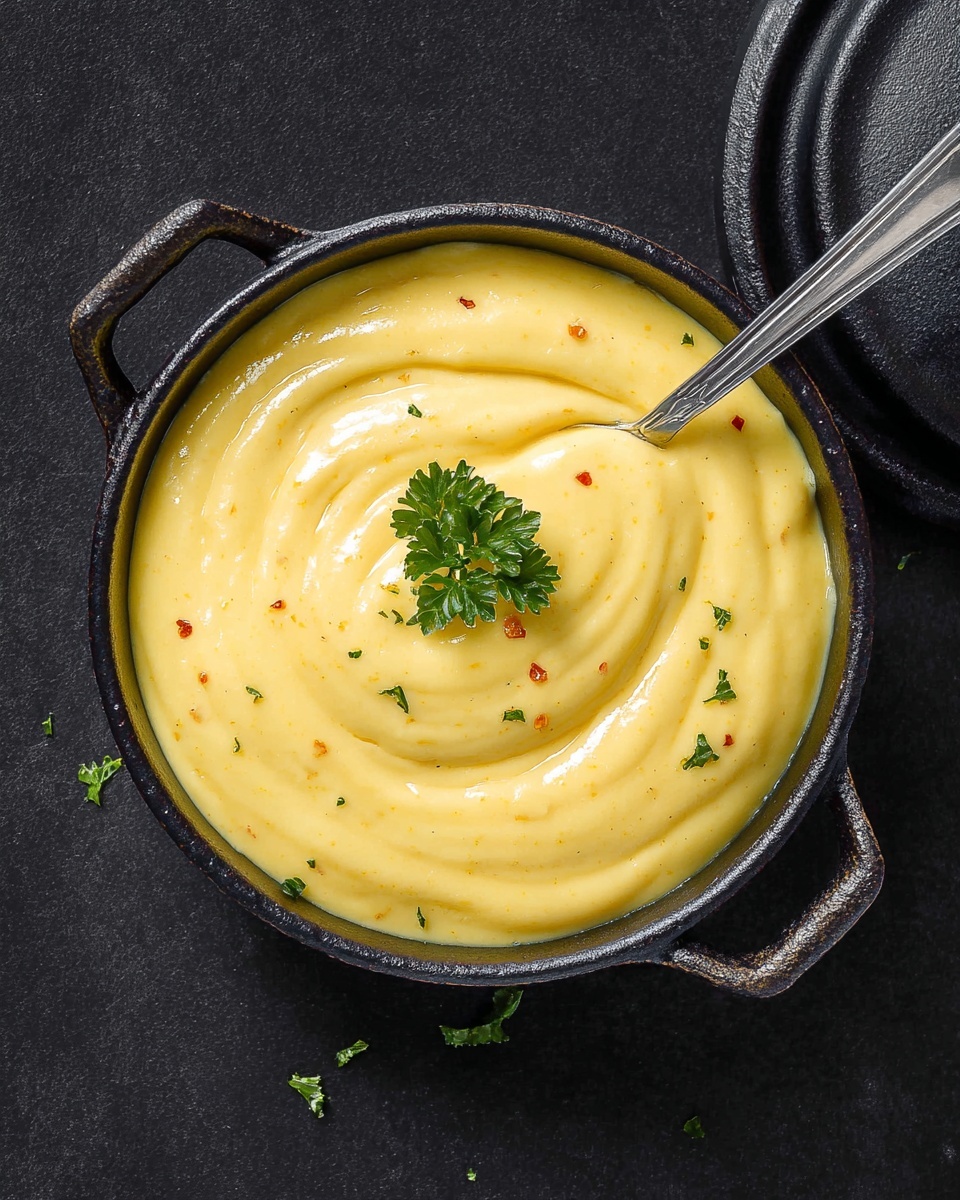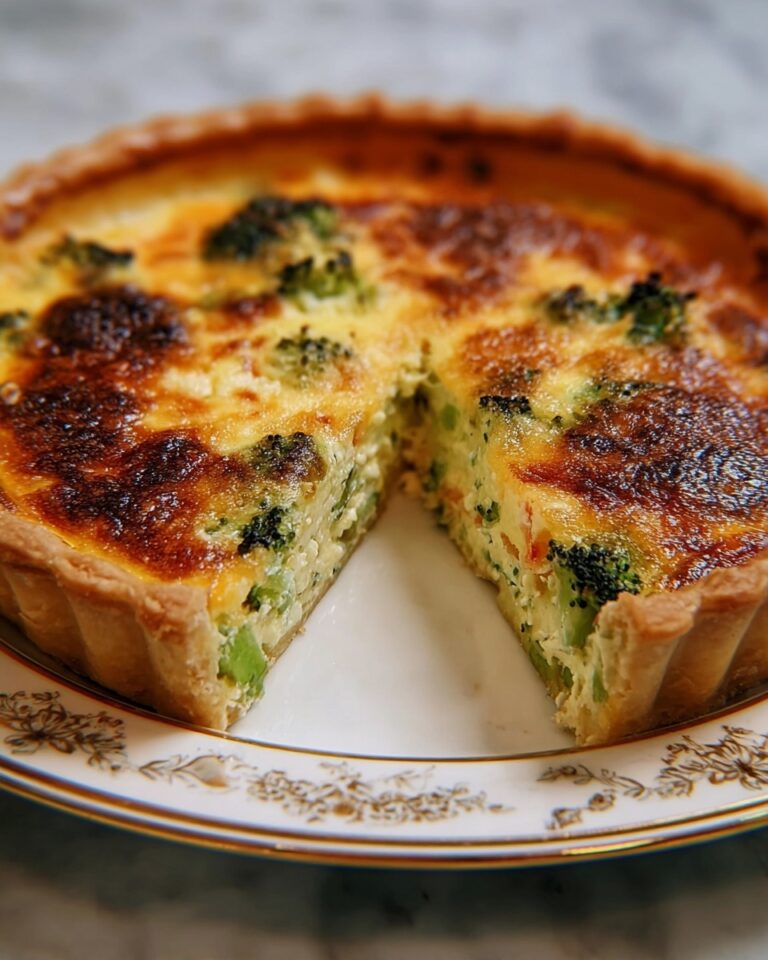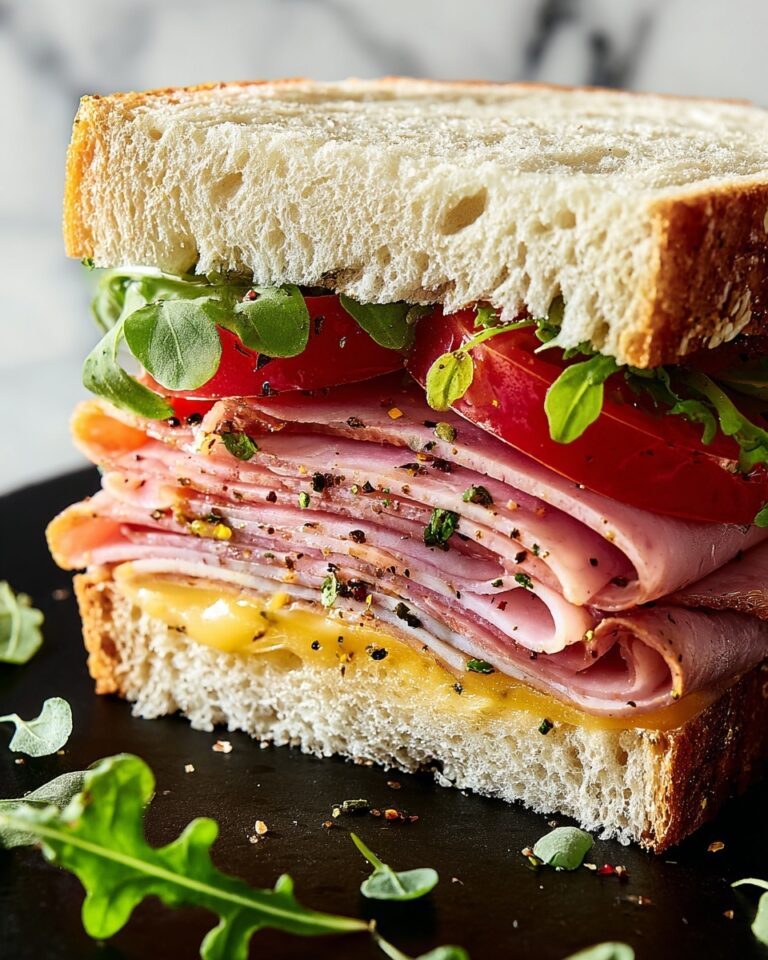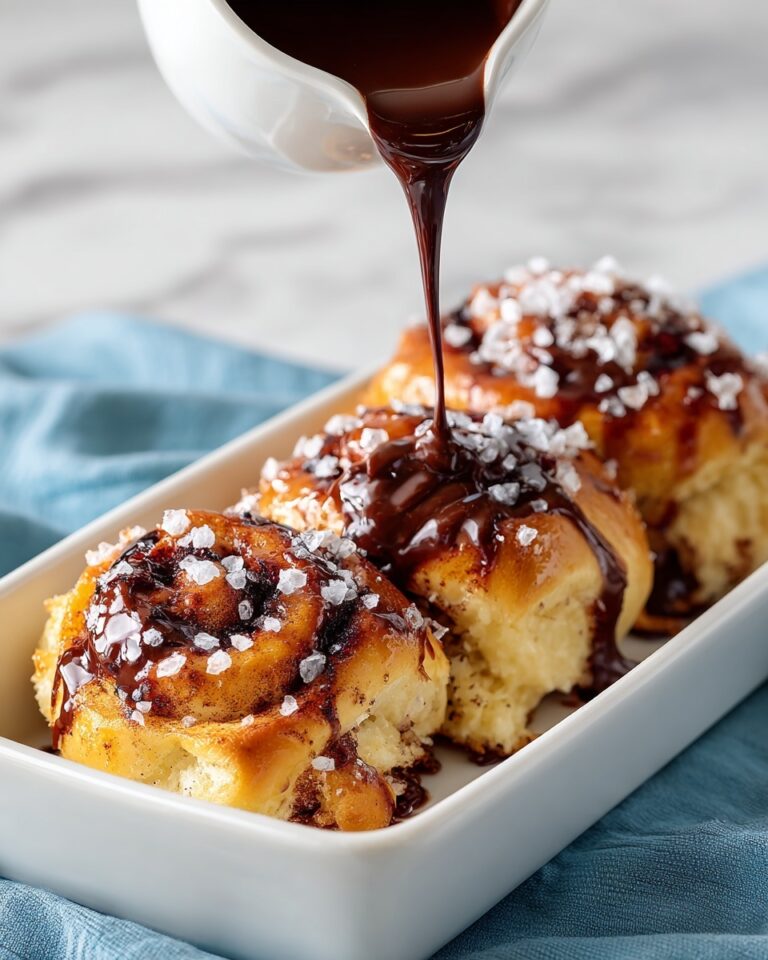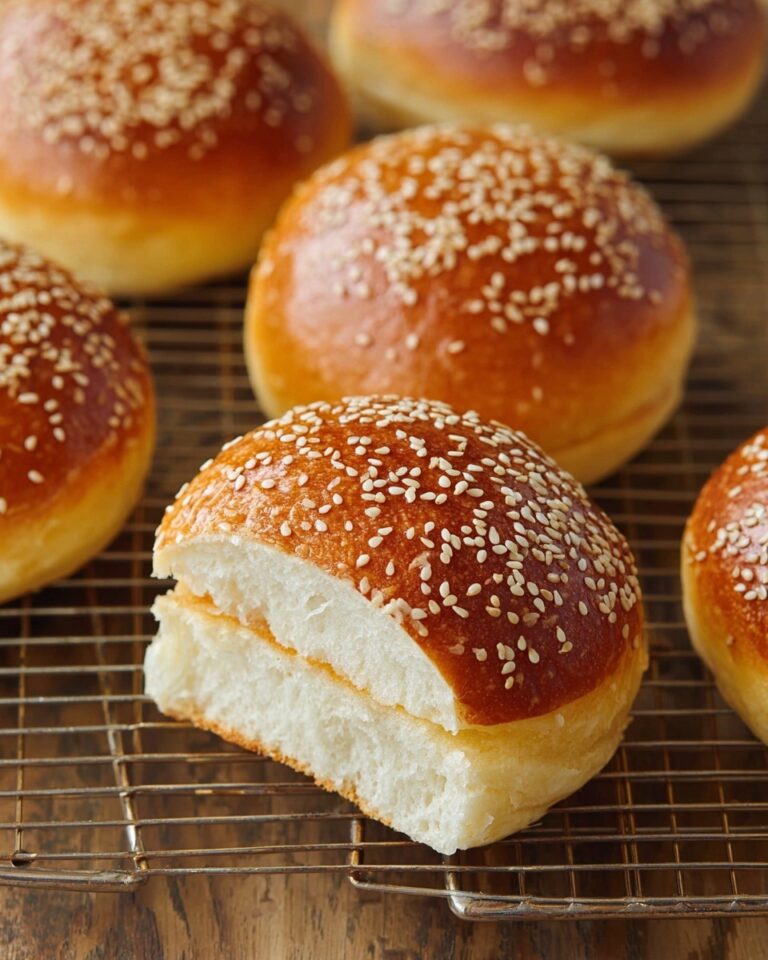If you have been looking for a creamy, tangy, and utterly irresistible sauce that can elevate any breakfast or brunch dish, this Easy Hollandaise Sauce Recipe is exactly what you need. With just a handful of simple ingredients and a quick whisking technique, you’ll have a luscious sauce that’s perfect for drizzling over eggs Benedict, steamed vegetables, or even grilled fish. This recipe captures the classic richness of hollandaise without the fuss, making it an absolute go-to for busy mornings or leisurely weekend feasts.

Ingredients You’ll Need
Making this Easy Hollandaise Sauce Recipe is wonderfully straightforward because each ingredient plays a vital role in building its luscious texture and bright flavor. From the creamy butter to the tangy lemon juice, each element is essential for creating that perfect balance.
- 2 large egg yolks: They form the silky base and provide richness to the sauce.
- 2 Tbsp lukewarm water: Helps to gently loosen the egg yolks for easier whisking and emulsification.
- 2 tsp fresh lemon juice: Adds a bright, zesty freshness that cuts through the richness.
- 1/2 tsp Dijon mustard: Gives a subtle tang and helps stabilize the sauce.
- 1/2 cup unsalted butter (8 Tbsp): The star ingredient that creates the smooth, velvety consistency.
- 1/4 tsp fine sea salt: Enhances the flavor and balances the acidity.
- 1/8 tsp cayenne pepper: Adds a gentle, warming kick that elevates the sauce without overpowering it.
How to Make Easy Hollandaise Sauce Recipe
Step 1: Separate the Egg Yolks
Start by carefully separating the egg yolks from the whites. Since the whites aren’t needed for this recipe, you can reserve them for another creative use—think fluffy omelets or meringues.
Step 2: Combine Key Ingredients
Into a small, non-reactive saucepan, add the egg yolks along with lukewarm water, fresh lemon juice, and Dijon mustard. Whisk these together until the mixture is smooth and fully combined, ensuring a harmonious blend that will thicken beautifully later on.
Step 3: Add the Butter
Cut the unsalted butter into small chunks, then add them gradually to the egg yolk mixture. The small pieces help the butter melt evenly and incorporate smoothly for that classic hollandaise texture.
Step 4: Cook and Whisk Constantly
Set the saucepan over a medium-low heat and whisk continuously. As the butter melts, you’ll notice the sauce becoming frothy and then slowly thickening. Keep whisking energetically for about 3 minutes, just until the sauce coats the back of a spoon—this is the magic moment when your Easy Hollandaise Sauce Recipe truly comes to life.
Step 5: Season and Serve
Remove the sauce from heat and season with fine sea salt and a pinch of cayenne pepper. Taste and adjust the seasoning to your preference. If the sauce thickens too much as it cools, simply whisk in a teaspoon of warm water to bring it back to a perfect consistency. Serve immediately or cover to keep warm.
How to Serve Easy Hollandaise Sauce Recipe
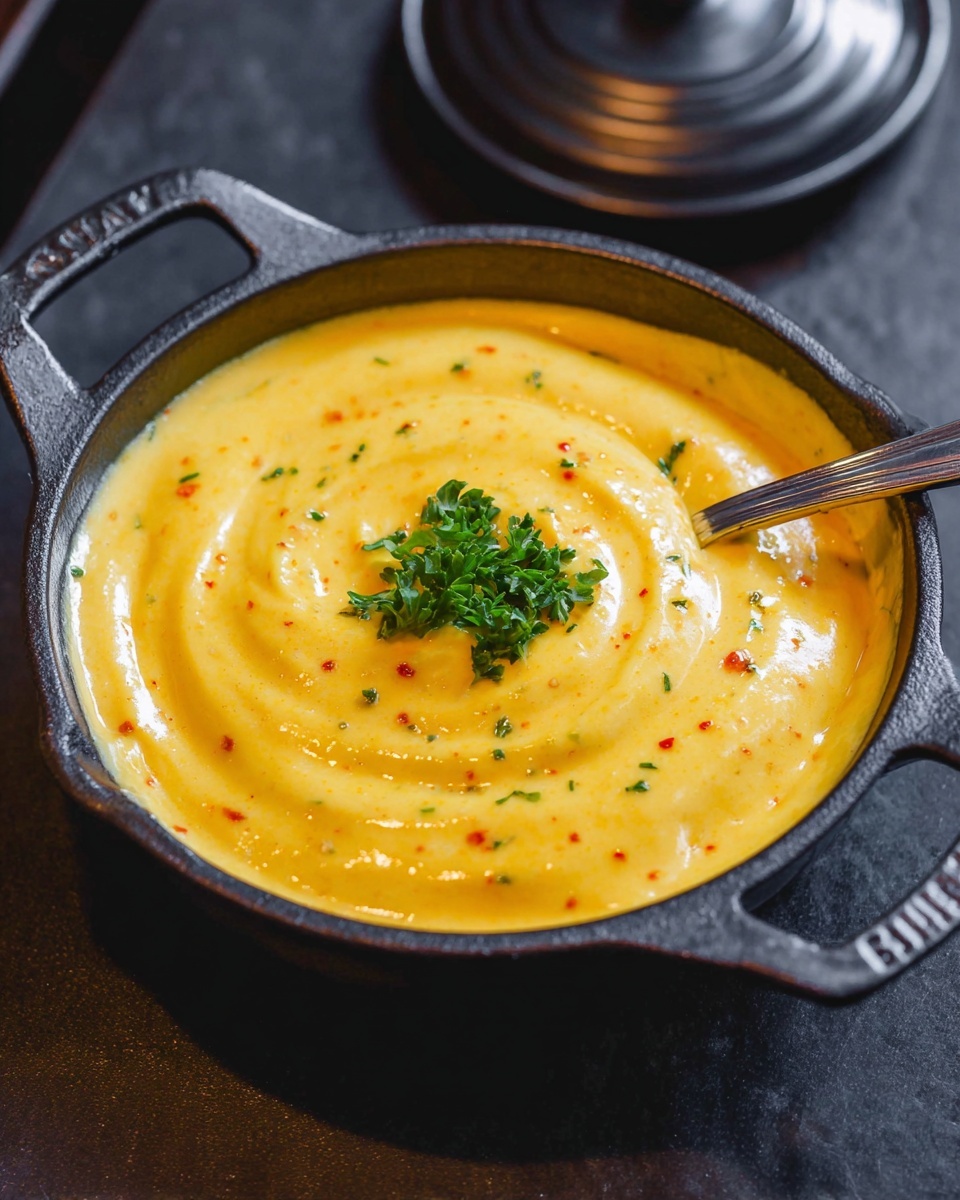
Garnishes
A drizzle of fresh chopped chives or a sprinkle of finely ground black pepper adds a lovely finishing touch, injecting a bit of color and subtle, fresh flavor that complements the sauce beautifully.
Side Dishes
This sauce is a natural partner to classic side dishes like steamed asparagus, roasted potatoes, or buttery grilled salmon. Its creamy texture and tangy notes balance hearty and delicate dishes alike, making any meal feel special.
Creative Ways to Present
Think beyond the usual eggs Benedict: pour this sauce over roasted cauliflower steaks, use it as a dip for crispy homemade potato wedges, or spoon it over poached chicken for a fancy yet effortless dish. The possibilities with this Easy Hollandaise Sauce Recipe are deliciously endless!
Make Ahead and Storage
Storing Leftovers
If you happen to have any leftover hollandaise, store it in an airtight container in the refrigerator for up to two days. Keep in mind that it’s best enjoyed fresh, so try to make just what you need.
Freezing
Freezing hollandaise isn’t recommended because its delicate emulsified texture can break down when thawed, resulting in a separated sauce that won’t reheat properly.
Reheating
To gently reheat leftovers, use a double boiler or warm water bath and whisk frequently. Adding a splash of warm water helps restore its creamy consistency without curdling or losing flavor.
FAQs
Can I use whole eggs instead of just yolks?
For a traditional hollandaise, using only egg yolks is key because the yolks provide the rich, silky texture that whole eggs cannot replicate. Using whole eggs will give a thinner, less creamy sauce.
What if the sauce breaks or separates?
If the sauce splits, whisk in a teaspoon of warm water very slowly, which often helps bring it back together. Maintaining a low heat while whisking constantly is crucial to prevent this from happening.
Can I use clarified butter?
Clarified butter can be used, but using whole melted butter adds more depth and creaminess to the sauce. Clarified butter may result in a lighter texture but slightly less richness.
Is lemon juice necessary?
Yes, lemon juice balances the richness with a bright acidity that is essential to hollandaise. You can tweak the amount slightly based on your taste but don’t skip it altogether.
How long does hollandaise sauce last once made?
Hollandaise sauce is best served immediately but can be kept warm for up to an hour. If stored in the fridge, consume within two days and reheat gently to preserve texture and flavor.
Final Thoughts
There’s nothing quite like a homemade hollandaise sauce to transform your breakfast or brunch into a special occasion. This Easy Hollandaise Sauce Recipe proves you don’t need to be a pro chef to achieve that luscious, velvety sauce that’s bursting with flavor. Give it a try, and I promise it’ll become a beloved staple in your kitchen — perfect for impressing guests or simply treating yourself to a little indulgence.
Print
Easy Hollandaise Sauce Recipe
- Prep Time: 5 minutes
- Cook Time: 5 minutes
- Total Time: 10 minutes
- Yield: 4 servings
- Category: Sauce
- Method: Stovetop
- Cuisine: French
Description
This Easy Hollandaise Sauce recipe is a classic French sauce known for its rich, creamy texture and tangy lemon flavor. Made with simple ingredients like egg yolks, butter, and lemon juice, this sauce is perfect for drizzling over eggs Benedict, steamed vegetables, or grilled fish. The sauce is whisked over gentle heat to achieve a smooth, velvety consistency and seasoned with a hint of cayenne pepper for a mild kick.
Ingredients
Hollandaise Sauce Ingredients
- 2 large egg yolks
- 2 Tbsp lukewarm water
- 2 tsp fresh lemon juice
- 1/2 tsp Dijon mustard
- 1/2 cup unsalted butter (8 Tbsp), cut into small pieces
- 1/4 tsp fine sea salt, or to taste
- 1/8 tsp cayenne pepper, or to taste
Instructions
- Separate Egg Yolks: Carefully separate the egg yolks from the whites, reserving the yolks for the sauce. Store the egg whites in an airtight container in the refrigerator for use in another recipe.
- Combine Yolks and Liquids: Place the egg yolks in a small non-reactive saucepan. Add the lukewarm water, fresh lemon juice, and Dijon mustard. Whisk together thoroughly to combine the ingredients evenly.
- Add Butter Pieces: Cut the unsalted butter into small pieces and incorporate them into the egg yolk mixture to prepare for emulsification.
- Cook and Whisk: Set the saucepan over medium-low heat. Whisk the mixture constantly as the butter melts and blends with the yolks. The sauce will start to become frothy. Continue whisking vigorously for about 3 minutes until the sauce thickens enough to coat the back of a spoon, then immediately remove from the heat to prevent scrambling.
- Season and Serve: Add fine sea salt and cayenne pepper to season the sauce, adjusting the amounts to taste. Serve immediately, or cover to keep warm. If the sauce becomes too thick, whisk in a teaspoon of warm water to restore the desired consistency.
Notes
- Use a non-reactive saucepan (such as stainless steel or ceramic) to prevent metallic flavors.
- Keep the heat low to avoid curdling the eggs while whisking.
- If the sauce breaks or separates, whisk in a teaspoon of warm water to bring it back together.
- This sauce is best served fresh but can be kept warm for a short period by covering.
- Leftover egg whites can be used in omelets, meringues, or other recipes.

